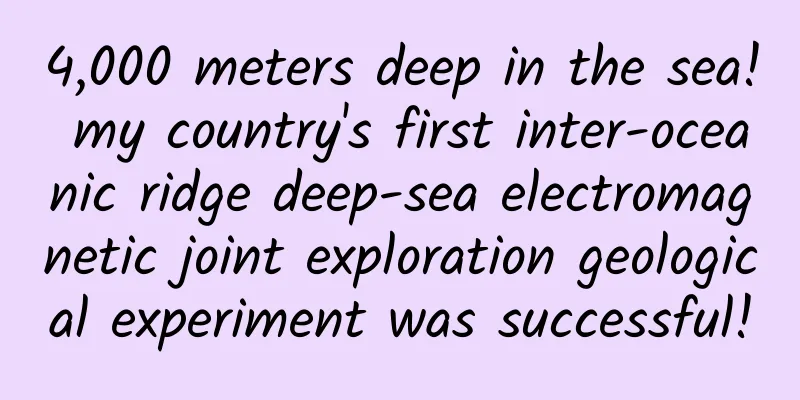Tiny organisms have great potential and may help humans discover extraterrestrial civilizations

|
Can microbes communicate with alien species? Sunrise as seen on Earth. (Image source: NASA) Are humans alone in the universe? The famous Search for Extraterrestrial Intelligence (also known as the Phoenix Project) has been trying to answer this question since 1959. Astronomer Carl Sagan and others believe that other civilizations similar to humans must exist and that we can communicate with them. But skeptics are not convinced, saying that there is a lack of evidence for this view, indicating that extraterrestrial civilizations are extremely rare. But if other human-like civilizations are unlikely to exist, are there other life forms that are better suited to exist in the universe than us? Is it possible that these life forms, such as non-human extraterrestrial civilizations, could communicate with each other? Our new research published in Biosystems suggests that it is possible. Microorganisms, such as bacteria, may be the rulers of life in the universe - and they are much smarter than we thought. In fact, we show how microorganisms can mimic the SETI process without human intervention. To understand microbes, we first need to put aside our anthropocentric biases. While many of us view microbes as single-celled organisms that cause disease, the reality is somewhat different. Microbes are loosely organized multicellular entities. Bacteria, for example, are societies consisting of billions of members that are capable of “thinking” and making decisions. A typical bacterial colony is a cybernetic entity—a "super brain" that solves environmental problems. What's more, all bacterial colonies on Earth are interconnected into a global bacterial supersystem called the "bacteriosphere." This "world wide web" of genetic information has been regulating the flow of organic elements on Earth for the past 3 billion years in ways that are far beyond human capabilities. For example, they recycle important nutrients such as carbon, nitrogen, and sulfur. Even today, bacteria are still the most important organisms on Earth. Take bacteria out of the biosphere and the ecosystem will gradually collapse. Therefore, bacteria may be better suited to space travel and communication than we are. A recent study found that terrestrial bacteria can survive in space for at least three years and possibly longer. Add to that the fact that bacteria can exist in a dormant state for millions of years, and it's clear that microbes have a strong ability to adapt. In fact, various versions of the panspermia hypothesis support this idea, which holds that microbial life exists and spreads throughout the universe. Recent mathematical models support this idea by calculating that microbes could be traveling not only within our solar system, but even throughout the Milky Way. Microorganisms explore extraterrestrial civilizations How does the microbial SETI program work? We believe that the bacterisphere may replicate all the known steps of the human SETI program. The first step of human SETI is the ability to read information on a cosmic scale. For example, using radio telescopes, we can analyze distant habitable planets. The second step is to develop the technology and knowledge to assess whether habitable planets have life. The third step is to advertise our presence on Earth to extraterrestrial intelligence and try to contact them after they respond to the initial signal. Our version of the microbial SETI program is shown below. Microbes have limited ability to read information on a cosmic scale. For example, cyanobacteria can read parts of the electromagnetic spectrum from the sun by receiving visible light (step one). This biological phenomenon is called phototropism, and occurs, for example, when plants turn toward or away from the sun or other light sources. Microorganisms explore extraterrestrial civilizations (Image source: microbial seti) The second step was crucial for the development of life on Earth. Cyanobacteria developed a biotechnology in the form of photosynthesis, converting water, sunlight and carbon dioxide into oxygen and nutrients. In the long process of evolution, this dead planet became a living planet, or the bacteriosphere. Microbial life subsequently became more complex, creating plants and animals over the past 600 million years. However, bacteria remain the most dominant form of life on Earth. Photosynthesis, as a bacterial technology, has been providing the "fuel" for life activities on Earth. The third step is about attraction and communication between chemically similar microbes. If extraterrestrial microbes have the same carbon-based chemistry and metabolism as those on Earth, including DNA, proteins, and other biomolecules, they should be able to integrate seamlessly into Earth's bacterisphere. The reverse process is also possible. Microbes from Earth could enter space via asteroids and seed life elsewhere in the universe. Or, as future space travelers, humans could act as microbial carriers thanks to the human microbiome. In order to understand microbial exploration of extraterrestrial civilizations, we need to understand the concept of intelligent life in the evolutionary sense. This will enable us to better assess bacterial intelligent life and its role in the environment of human and microbial exploration of extraterrestrial civilizations. Some biologists believe that humans are just a small part of the vast spectrum of natural intelligent life, including microorganisms and plants. We also need to re-evaluate technosignatures as a sign of an intelligent civilization. According to physicist Freeman Dyson, a technologically advanced civilization must have huge energy needs. These needs could be met by building giant cosmic structures called "Dyson spheres" around planets, which can capture energy from their host stars. Therefore, looking for such structures by observing whether the light from a star is blocked could be a way to find them. But if human-like civilizations are indeed rare, then there's no point in searching for such structures. Instead, it might be more appropriate to look for life signatures as signs of microbial life on habitable planets. The way to continue the search for extraterrestrial life may be to look for gases in the planet's atmosphere that indicate life, such as oxygen, methane, and phosphine, which are produced by microorganisms. The discovery of phosphine in the atmosphere of Venus was a promising clue, but it now looks doubtful, as a new study suggests that the signal found may be sulfur dioxide instead of phosphine. However, we have no choice but to keep trying. Fortunately, the James Webb Space Telescope should be able to scan the atmospheres of planets around planets outside the solar system when it is launched. BY: Predrag Slijepcevic, Nalin Chandra Wickramasinghe FY: Ludwig_XU If there is any infringement of related content, please contact the author to delete it after the work is published. Please obtain authorization for reprinting, and pay attention to maintaining integrity and indicating the source |
<<: Cell death, is it "suicide" or "accident"?
>>: Food Safety | How to choose and eat soy sauce? Teach you how to quickly identify good soy sauce
Recommend
Absolutely beautiful! One year after the Webb telescope was put into operation, these high-definition photos of the universe were taken!
Remember the tens of billions of dollars worth of...
I run to the toilet as soon as I drink coffee. Who can tell the difference between coffee and enema?
What is your main reason for drinking coffee? Is ...
China's APP active user rankings in November 2016 (TOP450)
iiMedia Research, the world's leading third-p...
51CTO Academy and Xingyu Spacetime have reached a strategic cooperation in VR online education - VR training courses will be launched
Pictured from left to right: Chen Bo, Vice Presid...
A complete App operation and promotion plan!
1. Concept of App operation and promotion Quoting...
The most detailed video promotion and marketing method in history!
Introduction: With the vigorous development of mo...
Does Evergrande really want to make cars? Not a single car has been produced, the company has suffered a loss of 4.8 billion yuan in half a year, and its market value has dropped by 80%.
In 2020, Evergrande Group officially announced it...
APP promotion: Kuaishou advertising case of Kuaiying video editing AAP!
The most popular thing now is short video. This i...
Brand Marketing Integration Path
With the in-depth development of mobile Internet ...
How to achieve accurate traffic diversion from 0 to 1?
“You will never make money beyond your perception...
The largest comet in history is flying towards the Earth, with a diameter of 137 kilometers! What do scientists say?
According to foreign news reports, NASA recently ...
"Tiangong Classroom" is about to start. What are the tricks of China's first space class on the space station?
Latest news! China's first space science educ...
Did the “earthquake cloud” predict the Texas earthquake? Here comes the August science rumor list →
1. "Earthquake Cloud" predicted the ear...









